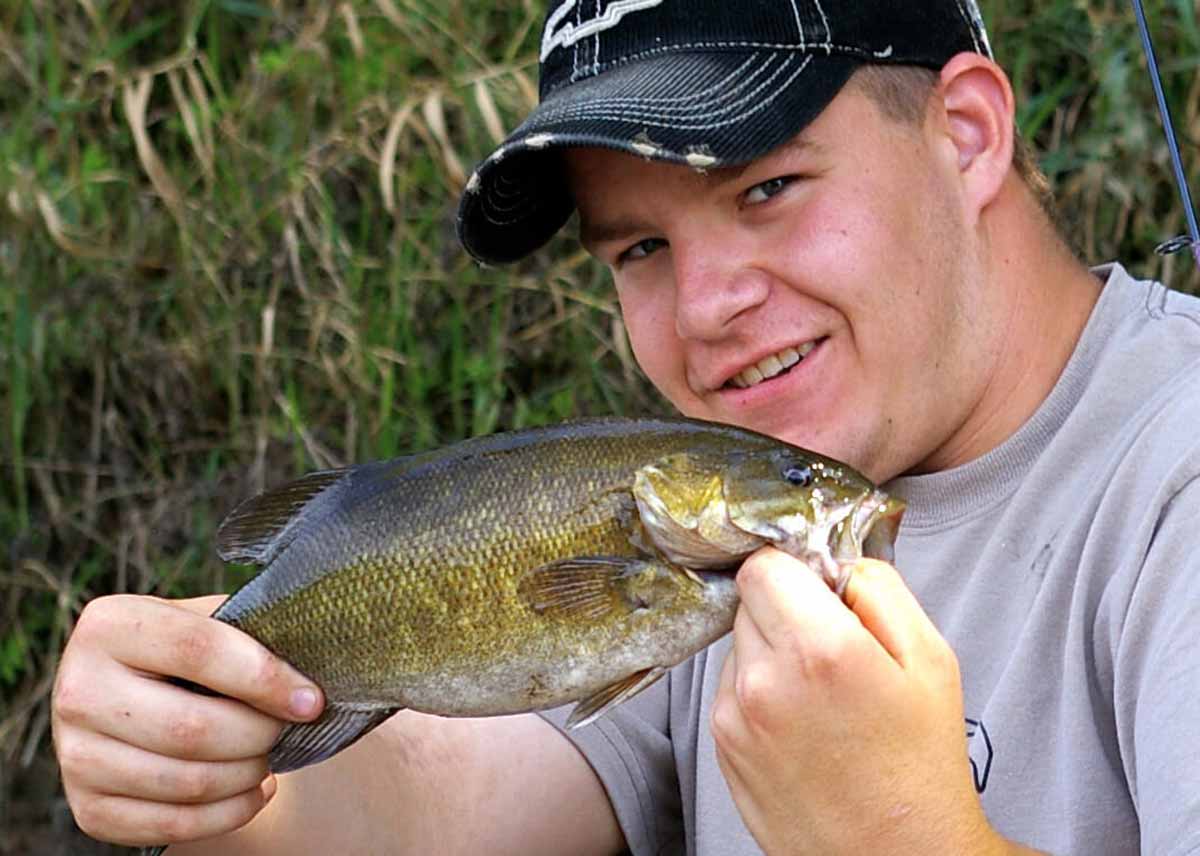
As teh Susquehanna River proved, smallmouth bass can suffer from largemouth bass virus.
Bob Frye/Everybody Adventures
This smokin’ gun maybe ain’t done smokin’.
And that could be bad news for smallmouth bass – and smallmouth bass anglers — throughout their range in North America.
Starting in 2005, biologists noticed young of the year smallmouth bass – those born in spring and just a few inches long by late summer – disappearing from Pennsylvania’s Susquehanna and Juniata rivers. Entire year classes vanished in cases.
The problem continued for years, spreading upstream and into tributaries, through 2012.
Why was the question..
Scientists now think they have the answer.
Researchers from Michigan State University say largemouth bass virus is to blame.
The disease is not new. It’s been around since the early 1990s, and in the Susquehanna for more than a decade.
Smallmouth bass can carry the virus, too. But no one thought they could die from it.
So biologists dismissed it as a potential issue early on.
“The scientific information at the time was, smallmouth bass are not affected by the virus,” said Leroy Young, who spent a decade studying the smallmouth mystery as director of the Pennsylvania Fish and Boat Commission’s bureau of fisheries until retiring in 2016. “So we didn’t go down that path.”
Researchers proved the virus is deadly to smallmouths under the right conditions, though.
Water temperature is the key.
The virus is a warmwater disease. So researchers subjected fish to it in two ways: by injecting it directly into their flesh and by putting it into water that fish were then immersed in.
At 52 degrees, smallmouths showed no ill effects, Michigan State scientists said.
But at 73 degrees, 10 percent of fish died. At 82 degrees, half died.
It wasn’t the virus itself that ultimately killed them, said Andy Shiels, the new director of the commission’s bureau of fisheries.
Rather, the fish develop lesions or sores. Bacteria or fungus settle in. Those “secondary” infections proved fatal.
That was another factor in prolonging this mystery, said Geoff Smith, the commission’s Susquehanna River biologist.
“The signs of this disease in smallmouths are different then they are for largemouths. That’s why it was overlooked for so long,” he said. “It’s a completely different set of signs.”
It impacted smallmouths, and proved so deadly, because of how warm the Susquehanna and Juniata get.
Since 2005, Shiels said, there have been times when daytime water temperatures in the Susquehanna River hit 93 degrees. Nighttime temperatures of 72 to 75 degrees are common, too.
That’s long been good for the fishery.
“It’s what makes the Susquehanna a bass factory,” Shiels said.
But it also makes the river prime for disease. Water temperatures ideal for spawning smallmouth bass mirror almost exactly the prime temperature for largemouth bass virus.
When the two meet, Shiels said, the result is “a soup that could cook this disease, cook this virus, for a prolonged period of time”
So the mystery is solved, Young said.
“Basically, the is the smoking gun. This is the eureka moment for this problem,” Young said.
But the problem remains.
Smallmouths in the Susquehanna and Juniata have responded on their own.
The entire population in those rivers turned over since 2005, Smith said. The fish there now have developed, if not an immunity, at least more of a tolerance for the problem. And their numbers are coming back.
In 2005, biologists were collecting fewer than 30 smallmouth bass per hour from the Susquehanna. They’re back to their pre-kill, 1990s levels now, though 120 fish per hour or more, Shiels added.
That suggests a fishery with some built-in disease resistance.
“If a bunch of kids get a cold, it’s unusual for every kid in the class to get a cold. Likewise, it’s unusual for every organism in the environment to get the same virus,” Shiels said. “Something happens that a couple of them survive.
“So you get a natural restoration of those fish as those that are resistant continue to reproduce,” he added.
But it could come back or, worse, spread.
It could rear up again in the Susquehanna and Juniata, Shiels said. The virus could adapt and mutate as the fish have.
But large-scale fish kills are “unlikely” unless that happens.
What might be more likely is the problem spreading to across Pennsylvania and the rest of the country.
Top smallmouth rivers like the Allegheny and Delaware, and most of their counterparts around the country, may already they have largemouth bass virus, Smith said. If not yet, they could soon, as water moves around in various ways.
That hasn’t been a problem so far because they typically don’t get as warm for as long as the Susquehanna, Smith said.
But scientists worry that, if climate change warms raises average temperatures, the virus could become an issue. It’s almost likely sometime, he said.
“You’re going to see some mortality events in places like the Allegheny, the Delaware, and points north and west into the smallmouth bass’ native range,” Smith said.
“So limiting that spread in the future, kind of keeping that in check, is going to be important messaging for us moving forward.”








